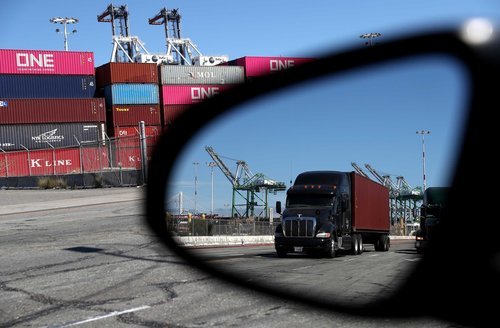Removing tariffs would reduce recession risk

The trade war is doing so much damage to the world economy that the United States and China might just roll back some of their destructive tariffs. That’s just what is needed to avoid a recession.
On Thursday, China revealed that the two sides are talking not only about avoiding an escalation scheduled for December, but removing some existing tariffs. If that becomes reality, it would be a strong step in the right direction, especially if those tariffs stay off.
For months, the trade drama focused on whether the clash would get worse, with ever more rounds of tariffs piling up on items like iPhones and video game consoles. Markets surged on every indication that an escalation could be averted, even when there were few concrete signs the tariffs might be reduced.
The trade war is the No. 1 risk to the economy, both in the United States and around the world. American factories, slammed by weak global growth and trade tensions, have suffered three straight months of contraction. Business spending is weak, shrinking in consecutive quarters.
Rolling back tariffs would ease the burden on businesses and households and boost confidence among CEOs who are reluctant to spend.
“It’s a much more optimistic view than we’ve heard in quite a while,” said JJ Kinahan, chief market strategist at TD Ameritrade. “Giving up tariffs is more positive because it means you are still moving commerce. Freezing tariffs means they’re still in the way.”
Wall Street doesn’t like tariffs
The latest developments lifted US stocks on Thursday, with the Dow, S&P 500 and Nasdaq zooming to fresh all-time highs. The Nasdaq is now up nearly 28% on the year. China-sensitive stocks, including Apple, Best Buy and Caterpillar, also advanced.
The CNN Business Fear & Greed Index of market sentiment was flashing “fear” just a month ago. Now, it’s catapulted to “extreme greed,” reaching its highest levels since the tax cut euphoria of late 2017.
There is no guarantee any tariffs–or which ones–will actually get rolled back. Investors have learned the hard way that progress in trade negotiations is fragile, and another outbreak of tensions is just one tweet away.
“Until we actually see pen meet paper, I would warn people not to get carried away,” said Kinahan.
A spokesman for China’s Ministry of Commerce announced on Thursday that the two countries have talked about rolling back tariffs on each other as part of “constructive discussions” in the past two weeks. China is insisting the two sides simultaneously cancel tariffs before any preliminary trade agreement can be signed.
Moreover, the spokesman said that the United States “agreed that they would like to remove some of the additional tariffs by phases.”
Such a step could be a gamechanger. Goldman Sachs recently told clients that while tariffs may have peaked, they are likely to stay at the current elevated levels through 2020.
US officials have not confirmed the tariff developments. And it’s not clear how these rollbacks would be enforced or when they would take effect. Earlier this week, Reuters reported that a meeting between US President Donald Trump and Chinese President Xi Jinping to sign a preliminary trade deal could be delayed until December.
Recession risk linked to fate of trade war
If no action is taken, Washington is scheduled to impose new tariffs on consumer-facing goods from China in December. At that point, nearly all imports from China will be subject to tariffs.
Existing tariffs have been a thorn in the side of the US and global economies.
The World Trade Organization recently warned of a “darkening outlook for trade” that could make this the weakest year for global trade growth in a decade. And the IMF has said the global economy is in a “precarious” position because of rising trade and geopolitical tensions.
The pain from the trade war is obvious in America’s manufacturing sector. US factories in September experienced their worst month in a decade, according to a survey by the Institute for Supply Management. The sector has contracted for three straight months, though the pace of the deterioration eased in October.
Even so, ISM said that 12 of 18 manufacturing industries are now in contraction, including metals, apparel and textile mills.
The good news is that the manufacturing turmoil has not completely infected the rest of the economy. Hiring remains resilient. Consumers are still spending. After very weak growth in September, the US service sector, which dwarfs manufacturing in size, rebounded last month.
The chance of a recession in the United States over the next 12 months dipped to 29% in October, according to an updated model released by the New York Federal Reserve this week. That’s down from 38% in August, which was the highest since the Great Recession.
Rolling back tariffs could allow those recession risks to recede even further.




